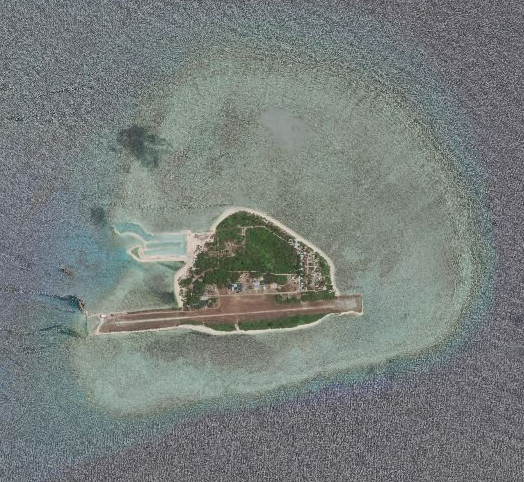The U.S. Navy’s readiness is being tested as China continues to build up its naval forces and threatens Taiwan. These concerns were highlighted in a recent 60 Minutes story featuring Admiral Samuel Paparo, onboard the USS Nimitz, deployed near the U.S. territory of Guam, southeast of Taiwan and the People’s Republic of China, or PRC.
Admiral Samuel Paparo commands the U.S. Pacific Fleet, whose 200 ships and 150,000 sailors and civilians make up 60% of the entire U.S. Navy.
“The Navy’s always on alert. One third of the Navy is always deployed and operating at all times. The Navy’s mustering right now about 300 ships, and there are about 100 ships at sea right now all around the globe.” – Admiral Samuel Paparo.
The story emphasized the challenge posed by China’s rapidly growing navy, which now boasts the world’s largest fleet of ships.
“The Chinese have made a great effort over the last decade-plus to modernize their navy, and in many cases to achieve parity with us.” – Admiral Samuel Paparo.
The 60 Minutes story also emphasized the need for the U.S. to maintain a strong and capable navy in the face of China’s rise, while also working with its allies in the region to counter China’s ambitions. The story also discussed the situation in Taiwan, where tensions have been rising as China increases its military activities in the region.
“I’ll tell you this: we are here to stay, right, in the South China Sea, and in this part of the world. And I think that’s the message that we really want to convey to not only China, but the entire world. We will sail wherever international law allows.” – Lt. Cmdr. David Ash.
Key takeaways from the story include:
- The need to increase the Navy’s readiness through more training and better equipment, as well as concerns about a shortage of ships and the impact of budget cuts on the Navy’s ability to maintain its readiness.
- The saying, which is, “Si Pacem, Para Bellum,” which is, “If you want peace, prepare for war.” Admiral Samuel Paparo.
About Si vis pacem, para bellum
This ancient Latin adage means “If you want peace, prepare for war.” For additional information on this topic click here for earlier post from the Americans for a Stronger Navy blog.
Amidst these challenges, organizations such as the Americans for a Stronger Navy will advocate for a stronger and better-equipped Navy.
The mission of the Americans for a Stronger Navy is to educate the public and policymakers about the importance of a strong Navy to national security and economic prosperity.
On behalf of the members of the Americans for Stronger Navy, we would like to salute both Admiral Samuel Paparo, Lt. Cmdr. David Ash, the entire crew for their service and CBS 60 Minutes for covering this important story.
“It is crucial to raise awareness about the threats facing the U.S. Navy and the need to maintain a strong and capable naval presence in the Indo-Pacific region.” – Americans for a Stronger Navy.

More about Adm. Samuel Paparo
Adm. Samuel Paparo, a native of Morton, Pennsylvania graduated from Villanova University and was commissioned in 1987. He is the son of a former enlisted Marine and the grandson of a World War II enlisted Sailor. He has earned a Master of Arts in International Studies from Old Dominion University and a Master of Science in Systems Analysis from the Naval Postgraduate School.
A U.S. Naval Aviator, he is a TOPGUN graduate and has flown over 6,000 hours in the F-14, F-15 and F/A-18 and 1,100 carrier landings.
Operational command tours at sea include Strike Fighter Squadron (VFA) 195 in the Forward Deployed Naval Forces, Yokosuka, Japan, deploying in Kitty Hawk Strike Group; VFA 106, NAS Oceana, Va; Commander, Carrier Air Wing 7, embarked in Dwight D. Eisenhower Strike Group and Commander, Carrier Strike Group 10.
Other operational assignments at sea include Fighter Squadron (VF) 14, flying the F-14 Tomcat with USS John F. Kennedy and USS Dwight D. Eisenhower Strike Groups and VFA-15, flying the F/A-18 Hornet with USS Theodore Roosevelt and USS Enterprise Strike Groups.
In joint operational service, he was Director of Operations (J3) at U.S. Central Command, Tampa, Florida; Battle Director at the Combined Air and Space Operations Center, Al Udeid, Qatar; and Commanding Officer of Provincial Reconstruction Team, Nuristan Province, Afghanistan with the 3rd Brigade, 10th Mountain Division and the 173rd Airborne Brigade. He served also on exchange duty with the U.S. Air Force flying the F-15C Eagle with the 71st Fighter Squadron, deploying multiple times to Saudi Arabia and Keflavik, Iceland.
Shore assignments include the staff of Commander, Naval Air Forces, as F/A-18 training, readiness and requirements officer. He was Programming Division (OPNAV N80), Strategy and Resource and Requirements Review Board branch head.
Executive staff tours include service as executive assistant to Commander, U.S. Fleet Forces Command, and executive assistant to the 31st Chief of Naval Operations.
His most recent assignment was commander, U.S. Naval Forces Central Command, U.S. 5th Fleet and Combined Maritime Forces, Manama, Bahrain.
Source: US Navy




